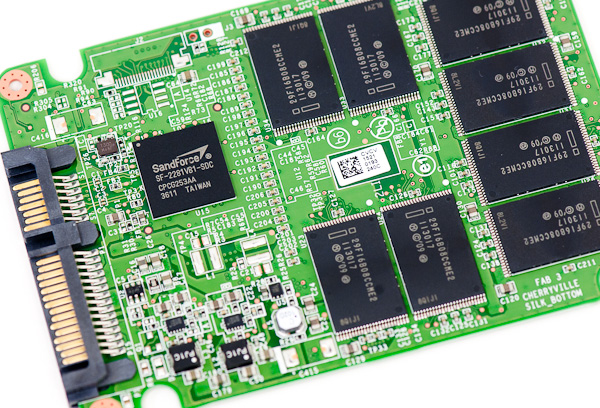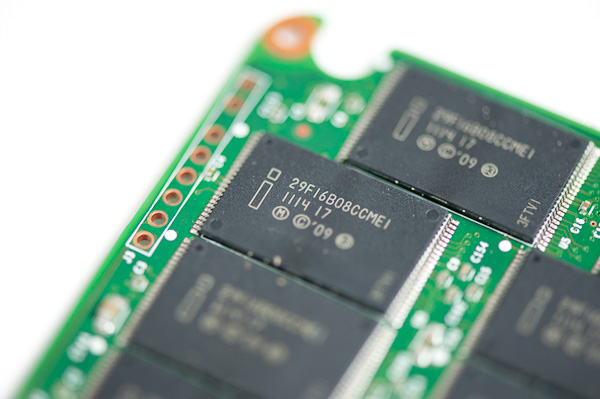A Look at Enterprise Performance of Intel SSDs
by Anand Lal Shimpi on February 8, 2012 6:36 PM EST- Posted in
- Storage
- IT Computing
- SSDs
- Intel
Final Words
The X25-E remains one of the fastest Intel SSDs in the enterprise despite being three generations old from a controller standpoint. The inherent advantages of SLC NAND are undeniable. Intel's SSD 520 regularly comes close to the X25-E in performance and easily surpasses it if you've got a 6Gbps interface. Over a 3Gbps interface, most of these drives end up performing very similarly.
We also showed a clear relationship between performance and drive capacity/spare area. Sizing your drive appropriately for your workload is extremely important for both client and enterprise SSD deployments. On the client side we've typically advocated keeping around 20% of your drive free at all times, but for enterprise workloads with high writes you should shoot for a larger amount. How much spare area obviously depends on your workload but if you do a lot of writing, definitely don't skimp on capacity.
What's most interesting to me is that although the 520 offers great performance, it didn't offer a tremendous advantage in endurance in our tests. Its endurance was in line with the SSD 320, if not a bit lower if we normalize to capacity. Granted this will likely vary depending on the workload, but don't assume that the 520 alone will bring you enterprise class endurance thanks to its lower write amplification.
This brings us to the final point. If endurance is a concern, there really is no replacement for the Intel SSD 710. Depending on the workload you get almost an order of magnitude improvement in drive longevity. You do pay for that endurance though. While an Intel SSD 320 performs similarly to the 710 in a number of areas, the 710 weighs in at around $6/GB compared to sub-$2/GB for the 320. If you can get by with the consumer drives, either the 320 or 520, they are a much better solution from a cost perspective.
Intel gives you the tools to figure out how much NAND endurance you actually need, the only trick is that you'll need to run your workload on an Intel SSD to figure that out first. It's a clever way to sell your drives. The good news is that if you're moving from a hard drive based setup you should be able to at least try out your workload on a small number of SSDs (maybe even one if your data isn't too large) before deciding on a final configuration. There are obviously software tools you can use to monitor writes but they won't give you an idea of write amplification.












55 Comments
View All Comments
ckryan - Thursday, February 9, 2012 - link
Very true. And again, many 60/64GB could do 1PB with an entirely sequential workload. Under such conditions, most non-SF drives typically experience a WA of 1.10 to 1.20.Reality has a way of biting you in the ass, so in reality, be conservative and reasonable about how long a drive will last.
No one will throw a parade if a drive lasts 5 years, but if it only lasts 3 you're gonna hear about it.
ckryan - Thursday, February 9, 2012 - link
The 40GB 320 failed with almost 700TB, not 400. Remember though, the workload is mostly sequential. That particular 320 40GB also suffered a failure of what may have been an entire die last year, and just recently passed on to the SSD afterlife.So that's pretty reassuring. The X25-V is right around 700TB now, and it's still chugging along.
eva2000 - Thursday, February 9, 2012 - link
Would be interesting to see how consumer drives in the tests and life expectancy if they are configured with >40% over provisioning.vectorm12 - Thursday, February 9, 2012 - link
Thanks for the insight into this subject Anand.However I am curios as to why controller manufacturers haven't come up with a controller to manage cell-wear across multiple drives without raid.
Basically throw more drives at a problem. As you would be to some extent be mirroring most of your P/E cycles in a traditional raid I feel there should be room for an extra layer of management. For instance having a traditional raid 1 between two drive and keeping another one or two as "hot spare" for when cells start to go bad.
After all if you deploy SSD in raid you're likely to be subjecting them to a similar if not identical number of P/E cycles. This would force you to proactively switch out drives(naturally most would anyway) in order to guarantee you won't be subjected to a massive, collective failure of drives risking loss of data.
Proactive measures are the correct way of dealing with this issue but in all honesty I love "set and forget" systems more than anything else. If a drive has exhausted it's NAND I'd much rather get an email from a controller telling me to replace the drive and that it's already handled the emergency by allocating data to a spare drive.
Also I'm still seeing 320 8MB-bugg despite running the latest firmware in a couple of servers hosting low access-rate files for some strange reason. It seems as though they behave fine as long as the are constantly stressed but leave them idle for too long and things start to go wrong. Have you guys observed anything like this behavior?
Kristian Vättö - Thursday, February 9, 2012 - link
I've read some reports of the 8MB bug persisting even after the FW update. Your experience sounds similar - problems start to occur when you power off the SSD (i.e. power cycling). A guy I know actually bought the 80GB model just to try this out but unfortunately he couldn't make it repeatable.vectorm12 - Monday, February 13, 2012 - link
Unfortunately I'm in the same boat. 320s keep failing left and right(up to three now) all running latest firmware. However the issues aren't directly related to powercycles as these drives run 24/7 without any offtime.I've made sure drive-spinndown is deactivated as well as all other powermanagement features I could think of. I've also move the RAIDs from Adaptec controllers to the integrated SAS-controllers and still had a third drive fail.
I've actually switched out the remaining 320s for Samsung 830s now to see how they behave in this configuration.
DukeN - Thursday, February 9, 2012 - link
One with RAID'd drives, whether on a DAS or a high end SAN?Would love to see how 12 SSDs in (for argument's sake) an MSA1000 compare to 12 15K SAS drives.
TIA
ggathagan - Thursday, February 9, 2012 - link
Compare in what respect?FunBunny2 - Thursday, February 9, 2012 - link
Anand:I've been thinking about the case where using SSD, which has calculable (sort of, as this piece describes) lifespan, as swap (linux context). Have you done (and I can't find) or considering doing, such an experiment? From a multi-user, server perspective, the bang for the buck might be very high.
varunkrish - Thursday, February 9, 2012 - link
I have recently seen 2 SSDs fail without warning and they are completely not detected currently. While I love the performance gains from an SSD , lower noise and cooler operation, i feel you have to be more careful while storing critical data on a SSD as recovery is next to impossible.I would love to see an article which addresses SSDs from this angle.